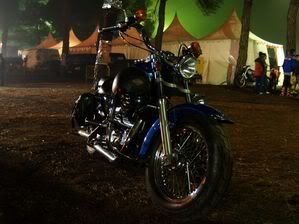
________________
Image source: Free Pictures of Spain
Economic woes and rising gas prices have led to a significant increase in the number of motorcycle sales. Between 1997 and 2006, yearly motorcycle sales jumped from about 356,000 to almost 1.1 million bikes. Not surprisingly, when the National Highway Traffic Safety Administration (NHTSA) released their motor vehicle fatality report in 2007 the number of motorcycle deaths increased by almost 7%. That was the largest jump in fatalities for the motorcycle sector since the government began keeping statistics for them in the mid-1970s.
Although all 50 states and the District of Columbia require a license to operate a motorcycle, only a handful of them require a rider education course. Most states will issue a license with only a passing written exam score and on-cycle skills test. With the ever increasing number of motorcycle riders there has been a surge in the number of programs offering training classes. Unfortunately, the number of class participants does not equal the number of inexperienced riders on the road. This lack of training and experience have contributed to the ever-increasing fatality rate in motorcycle accidents.
Coupled with the dramatic increase in motorcycle sales and inexperienced riders, many states also began repealing their motorcycle helmet laws, which continues to lead to increases in motorcycle fatalities. Without head protection riders immediately decrease their likelihood of surviving a crash. Although not all motorcycle helmets are created equally, the Department of Transportation has set standards for the helmets they approve. The safest helmets weigh at least three pounds, bear a “DOT” sticker, have a full visor and have a thick protective inner core that is at least an inch thick. According to the NHTSA data, simply investing in and wearing a safe helmet can increase a rider's likelihood of survival in a crash by almost 37%.
There are other safety equipment
concerns when riding a motorcycle. The stereo-typical image of a rider is one dressed head to toe in leather, heavy boots and a full-visored helmet. That image is also one of a highly safety-conscious rider. Motorcycle jackets are specifically designed for use when riding. The leather is heavier and tougher than in typical mens leather jackets. These jackets provide protection from road burn, better wicking capabilities during rain, and offer better protection against insects and other materials that may be thrown up from the ground while driving. Leather pants and gloves provide the same benefits for their respective areas.
Hard-soled, heavy boots provide riders with the best foot protection while riding. They can make all the difference while trying to prevent a bike from falling, because of their sturdiness and structure. Soft-soled sneakers provide little protection against road rash and can easily pop off during a crash. Protecting the foot is an important part of being able to walk away from an accident scene unharmed.
Although no safety equipment can completely protect a rider from an accident, it can significantly increase survival rates during one. Use common sense when riding. Drive defensively, being especially aware of high-profile vehicles that may have a difficult time seeing motorcycle riders. Make the bike visible after dark. These simple steps can increase the odds of surviving a crash and winding up a statistic.
source:http://www.amazines.com/Automotive/article_detail.cfm/1232075?articleid=1232075

